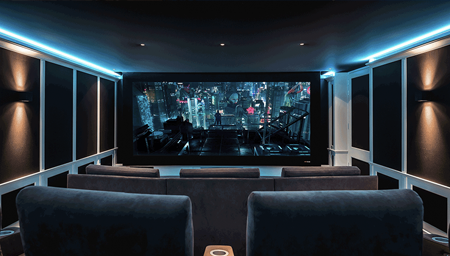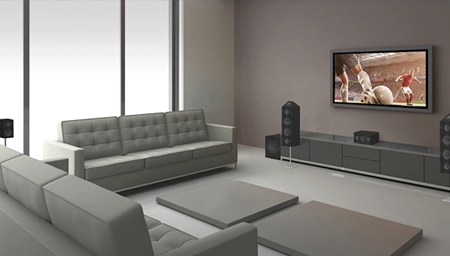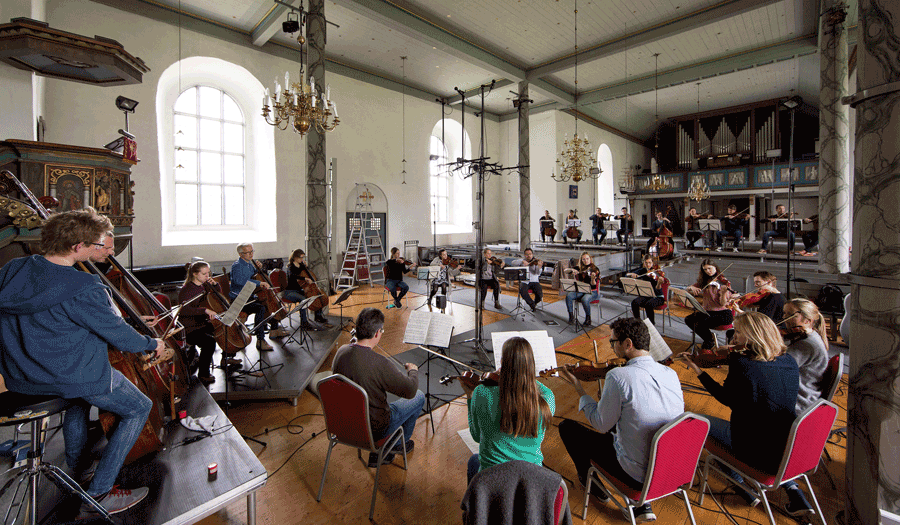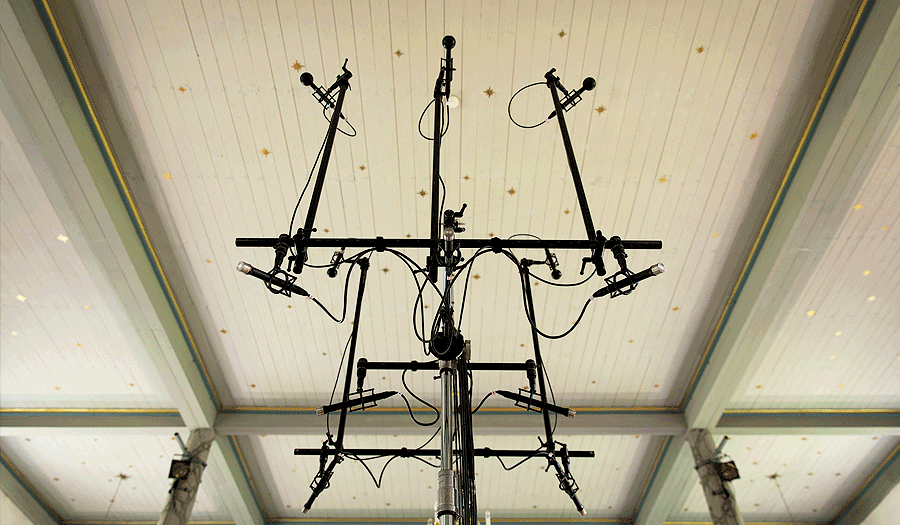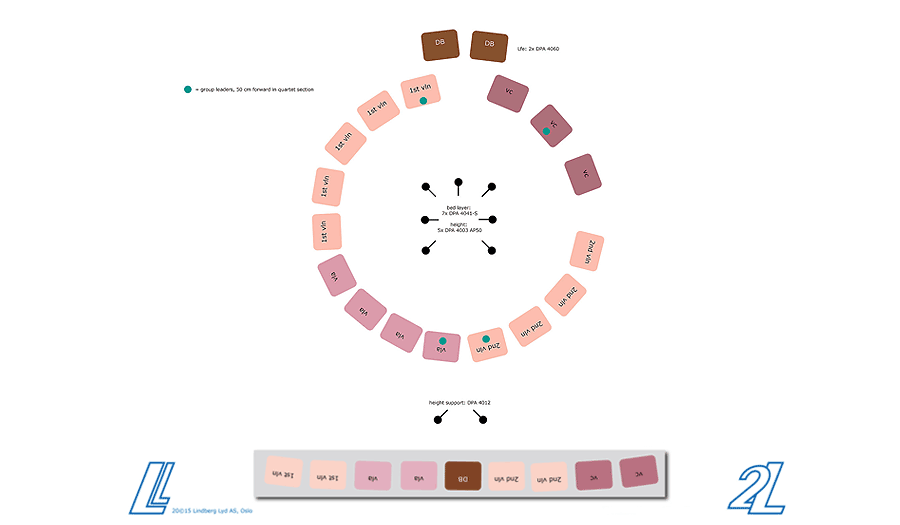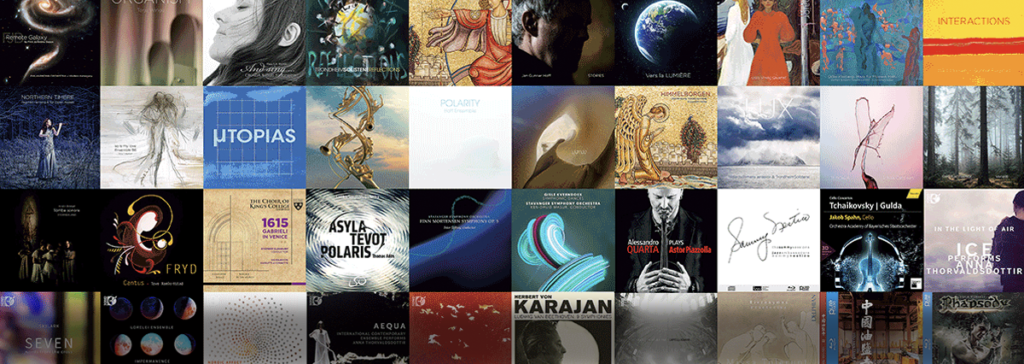
Atmos Music: A World Beyond Movies
While most people associate Atmos with action films, it turns out the format works just as well with every imaginable kind of music
by William Erb
April 6, 2021
I recently came across an interview with Elliot Scheiner, a 5.1 surround mixing pioneer. He had some things to say about music in Dolby Atmos that caught my eye. For example: “There’s no way that anybody would consider 11 speakers, so that leaves the listener with a Sennheiser or Sonos soundbar or Echo smart speaker.” And, “Dolby Atmos is great in a theater. You get a perfect picture of what Atmos is. They can’t convince me, just yet, that it’s great for music.” When the interviewer commented to Scheiner, “Yeah, it’s not accessible to most people yet in a way they can actually enjoy,” his response was, “You’re right.”
Reading this was yet another reminder of the general lack of awareness about the many home theater and media room installations that already have everything in place for playing music in Atmos. If you have 11 speakers (or 15, or maybe even more) plus subwoofers in an Atmos layout, why wouldn’t you want to listen to music that is specifically mixed for your setup?
The good news is that not all recording engineers feel as lukewarm about music in Atmos as Elliot Scheiner. Take for example Stefan Bock and his team at MSM Studio Group, who began mixing in 5.1 in 1994 and in Auro 3D in 2012. Stefan embraced Atmos in 2015 and has never looked back. He is also the developer of the Pure Audio Blu-ray format, which was introduced in 2009 and to this day remains pretty much the only game in town for lossless playback of musical recordings in immersive formats such as Atmos, Auro 3D and DTS:X. Out of a total of roughly 250 to 300 Pure Audio Blu-ray titles, there are currently around 75 that include an Atmos mix, usually alongside high-resolution 5.1 and stereo mixes, and that number continues to grow.
When I contacted Stefan for this article, one of the first things he said to me was: “In my opinion, immersive 3D audio formats can be bigger for music than they have been for movies.” Now that I have had a chance to listen closely to some music that was recorded and mixed specifically for a 3D playback environment (as opposed to albums remixed in Atmos from existing recordings), I think Stefan may be on to something.
For starters, the added height channels in Atmos can definitely help to recreate spatial effects of reverberant and reflective spaces such as concert halls and churches with more fidelity than either stereo or 5.1 mixes. Atmos’s object-based audio, which frees artists and mixing engineers from being tied to specific surround channels, is also stimulating new approaches to music and therefore new listening experiences for consumers. Finally, there is the indefinable subjective response triggered when listening to a high-quality immersive music recording. Can Atmos do for music what Technicolor did for movies? The potential is there, but many hurdles must still be overcome before that potential can become reality.
Try this at home: A starter sampler of Atmos music discs
For anyone who wants to experience for themselves how good 3D music can sound, there are plenty of Pure Audio Blu-ray titles available to choose from in a variety of musical genres. To hear how a great recording can create a truly immersive soundstage where you can locate every instrument around you with jaw-dropping immediacy, listen to Alessandro Quarta Plays Astor Piazzolla (the track “Jeanne Y Paul” was a particular highlight for me) or The Gordian Knot by Gordon Goodwin’s Big Phat Band. To place yourself in the midst of an incredibly lush-sounding string ensemble, try Reflections by the Trondheim Soloists (shown in the video at left and the images below). For a crystal-clear and intimate performance by a jazz trio playing in a church, listen to the Hoff Ensemble’s Polarity. To experience the spaciousness of a cathedral, try either The Choir of King’s College Cambridge on 1615 Gabrieli in Venice or Konstantin Reymaier’s The New Organ. To appreciate how object-based mixing can add to electronic music, check out Yello’s Point. If you are looking for video to go along with your music, try either John Williams in Vienna for a rousing concert recorded with superb attention to detail or Max Cooper’s Emergence for a combination of electronic music and science-inspired animation that seems made for a home theater.
click on the images to enlarge
The stage layout & microphone array for recording the performance by the Trondheim Soloists for 2L’s immersive album Reflection. (Session photos & diagram by Morten Lindberg, recording producer and balance, mix and mastering engineer.)
Although it was easy to play Pure Audio Blu-ray discs through my theater system, I did need to raise the levels of my surround and height channels to match the front LCR channel levels at my listening position to get a more balanced immersive effect. This kind of adjustment may be particularly relevant for those who are starting from a calibration set up for playing music in stereo or if the surrounds and heights have been de-emphasized since they are typically used only for effects in movies. If you want to go one step further and you have a Trinnov Altitude audio processor with the latest software installed, you can open the Atmos Object Viewer while you’re listening to get real-time feedback on the approach taken to object-based mixing for any given recording.
While Atmos has been available as a music format for several years now, the pace of Atmos new releases has so far been sluggish. This may be about to change, however, as more music labels, including Universal and Warner, have jumped on the Atmos bandwagon, bringing welcome reinforcements to the original trailblazers such as Grammy-winning Norwegian immersive music pioneer 2L. As a result, the number of Atmos music studios is increasing, with Universal’s Capitol and Abbey Road studios joining independent immersive mastering specialists such as msm studio group and the newly rebuilt Coast Mastering. Although it is still in the early days and the quality of the end product varies, with more recording studio infrastructure coming online it is becoming easier for artists and labels to start building Atmos mixes into their release plans.
Lossless streaming and download options for music in Atmos:
Not there yet
What if you want playback options other than physical media for listening to music in Atmos? Unfortunately, the pickings here are still very slim and those options that do exist are likely to disappoint anyone who has invested in a high-end audio system.
For example, Tidal Atmos relies on the lossy Dolby Digital Plus codec with a bitrate of 768 kbps. In contrast, Pure Audio Blu-ray employs the lossless Dolby TrueHD codec for Atmos, which I measured routinely delivering bitrates over 10x higher when playing music from discs. The difference in sound quality between streaming and physical media is therefore much more pronounced for music in Atmos than for stereo recordings, which both Tidal and Qobuz can stream in high-res formats. Listening to Tidal Atmos tracks in my theater through an Apple TV felt like a tease. Once I raised the volume level (substantially higher than what is normally required for playing stereo tracks on Tidal), I could definitely hear the immersive mix, but I missed the vivid envelopment and the way that I can pick out the crisp sound of each instrument when listening to a Pure Audio Blu-ray recording.
If there are currently no options for lossless streaming of Atmos music, are there any straightforward solutions for downloading and playing lossless Atmos music files? For 2D surround music in 5.1, for example, it is relatively simple to download a FLAC file, add it to a Roon music library, and then use a Roon Ready processor such as the Trinnov Altitude to play it through a theater audio system. You can also use the processor decoders to upmix from 5.1 to Atmos or Auro 3D, but this doesn’t sound the same as playing a native 3D mix.
Downloading and playing Atmos music is a different story. First of all, Atmos content cannot be stored in a FLAC file because FLAC can’t carry the metadata with the location coordinates for the sound objects that are a core feature of Atmos mixes. There are a few Atmos albums downloadable in MP4 file format, but these also use the same low bitrate codec as Tidal Atmos so cannot match the sound quality of Pure Audio Blu-ray. Until a service like Roon supplies an elegant solution for lossless playback of Atmos music files through home AV systems, downloads are likely going to have only limited appeal.
Sadly, Atmos support is not a priority for Roon, as evidenced by a reference in a Roon Knowledge Base article on multichannel support to “video/movie specific schemes that aren’t very relevant in an audio-only environment like Roon.” When I queried Roon about their plans, they confirmed that they are likely to be more of a follower than a leader when it comes to enabling Atmos playback through Roon Ready devices. It is therefore going to be up to another content-delivery platform to come up with a user-friendly solution for downloading and playing Atmos music.
Since for the time being there are no viable options for either streaming or downloading lossless Atmos music, Pure Audio Blu-ray is in a privileged position for anyone who wants to experience how good an immersive 3D music mix can sound in a home theater or media room. Until Pure Audio brings a US distributor on board, the most reliable way to get your hands on these recordings is to go through the European Pure Audio Recordings online store. Some Pure Audio Blu-ray titles are also available on Amazon, but they may be mislabeled as Audio CDs.
Hopefully other Cineluxe readers will enjoy this novel listening experience as much as I have. After all, the more uptake there is for these types of recordings, the easier it will be to convince skeptics like Elliot Scheiner to take Dolby Atmos more seriously as a music format for the high-end home AV market.
William Erb is a longstanding movie enthusiast, music lover & home AV tinkerer. He has been using his spare time, now that he is semi-retired after a career in banking & biotech, to renovate his new home in LA with a private cinema and a distributed-audio system, both state-of-the-art. William became a client of Sam Cavitt’s Paradise Theater in the early stages of his renovation project. He was lucky enough to get the private cinema completed just before lockdown, and is glad not to need an excuse to stay at home to watch movies and listen to music.
Check out our staff’s picks for the best movie scenes and music tracks for finding out what your system can do
© 2025 Cineluxe LLC


